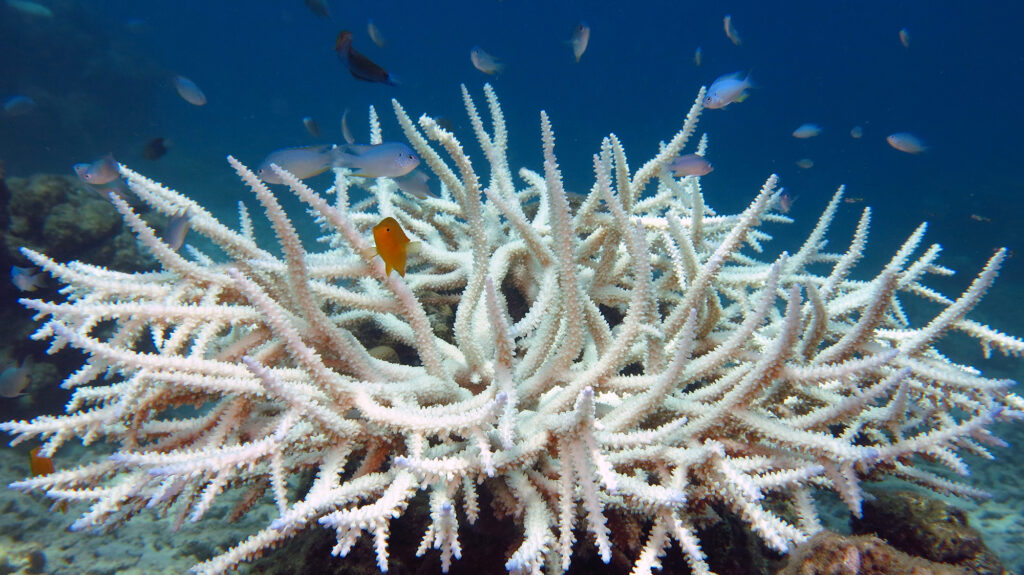An artificial reef is a manmade structure that is designed to give marine life a place to build a new coral reef on. Typically, coral reefs are naturally formed over millions of years.
With the evolution of our species – which led to more and more development of land – a byproduct of this development resulted in pollution. This greatly contributed to the destruction of nearby coral reefs – especially in coastal communities. Communities that were developed on a body of water that ultimately led to the ocean also contributed to this issue. So essentially the excess nutrients caused all kinds of poor water quality conditions which did not allow the symbiotic relationship between the corals and the fish to occur. We will go over that relationship in more detail here shortly.
In addition to pollution, our fishing practices became a lot less sustainable in order to meet the demand for the rapid population growth of our species. With pollution and overfishing combined, the symbiotic relationship between the reef fish and the coral got disrupted. This has resulted in coral bleaching events and all kinds of unfavorable algae outbreaks.
Here’s how the whole symbiotic relationship works starting with the coral and the algae:
So coral is actually an animal. They produce an algae called zooxanthellae which lives in the tissue of the coral. The symbiotic relationship works like this:
The coral’s tissue provides the algae with a protected environment and the compounds that they need into order to be able to photosynthesize. The zooxanthellae then produce oxygen and help the coral to remove wastes from the coral reef. As a result of the oxygen production, the zooxanthellae also produce glucose, glycerol and amino acids. The coral then takes these 3 and makes proteins, fats, and carbohydrates. They also produce calcium carbonate and this is what the coral reef structure is made out of.
Over time, these tiny transactions between the coral and the zooxanthellae produce the structure that ultimately evolves into a coral reef teaming with all kinds of life. The zooxanthellae also are responsible for the beautiful colors that the coral exhibit.
When pollution fogs up the water, it disrupts the zooxanthellae’s ability to photosynthesize properly. This stresses the coral out and results in the coral’s polyps expelling the zooxanthellae cells. If the polyps go too long without the zooxanthellae, the tissue starts to wither away and ultimately die – this also known as coral bleaching.

Without the coral, the fish who consume the coral would not be available for larger fish to consume and so on and so forth. So the reef fish highly depend on the coral for a source of food as well as for a safe place to lay their eggs so that they can hatch without being easily consumed. This ensures the survival of their species.
The reef fish produce waste which provide the zooxanthellae with the elements that they need in order to photosynthesize. So it’s a complex but really cool symbiotic relationship!
Not all reef fish are carnivorous coral consumers though. A lot of them are grazers and consume the algae that grow around and on the coral as a byproduct of the nutrients being produced from this symbiotic relationship. This algae is consumed by the zooplankton which the baby fish, once they hatch, rely on as a food source. If the algae grows too much, this will block out the light and not allow the zooxanthellae in the coral’s tissues to photosynthesize. So it’s all connected and every living thing that is involved serves a specific function and purpose. When any of these are removed from the equation, the reef starts to die off.
In the 1980s we started to notice that the corals were experiencing bleaching events. In 2016, an El Niño weather pattern occurred which caused water temperatures in the Pacific Ocean to increase. It is said that this is what caused the major bleaching event in the Great Barrier Reef. Understandably this alarmed scientists. Later in October of 2020, scientists found a massive coral reef just 3.7 miles off of the Great Barrier Reef.
So there are probably more coral reefs that we have yet to discover. But in the meantime, we are being good stewards of our environment by building these artificial reefs in order to fix the damage that we have done as a result of the evolution of our species.
In my opinion part of our evolution is:
- recognizing our impact on the environment around us
- researching the issues that we caused as a result of our evolution
- understanding these complex systems and then using our technological abilities in order to restore what we have accidentally destroyed.
So these artificial reefs are put in place in order to essentially fast forward the calcium carbonate production process and quickly create a baseline reef structure. Scientists have reported lots of species appearing on these structures within just a few months. This ultimately will expedite the restoration of the reefs that have both been damaged by us as well as by natural disasters. Restoring our reefs and creating new ones to help balance these complex symbiotic relationships out can ultimately stabilize and prevent any human made disruptions to the climate.
And so that’s how artificial reefs work. 🙂
